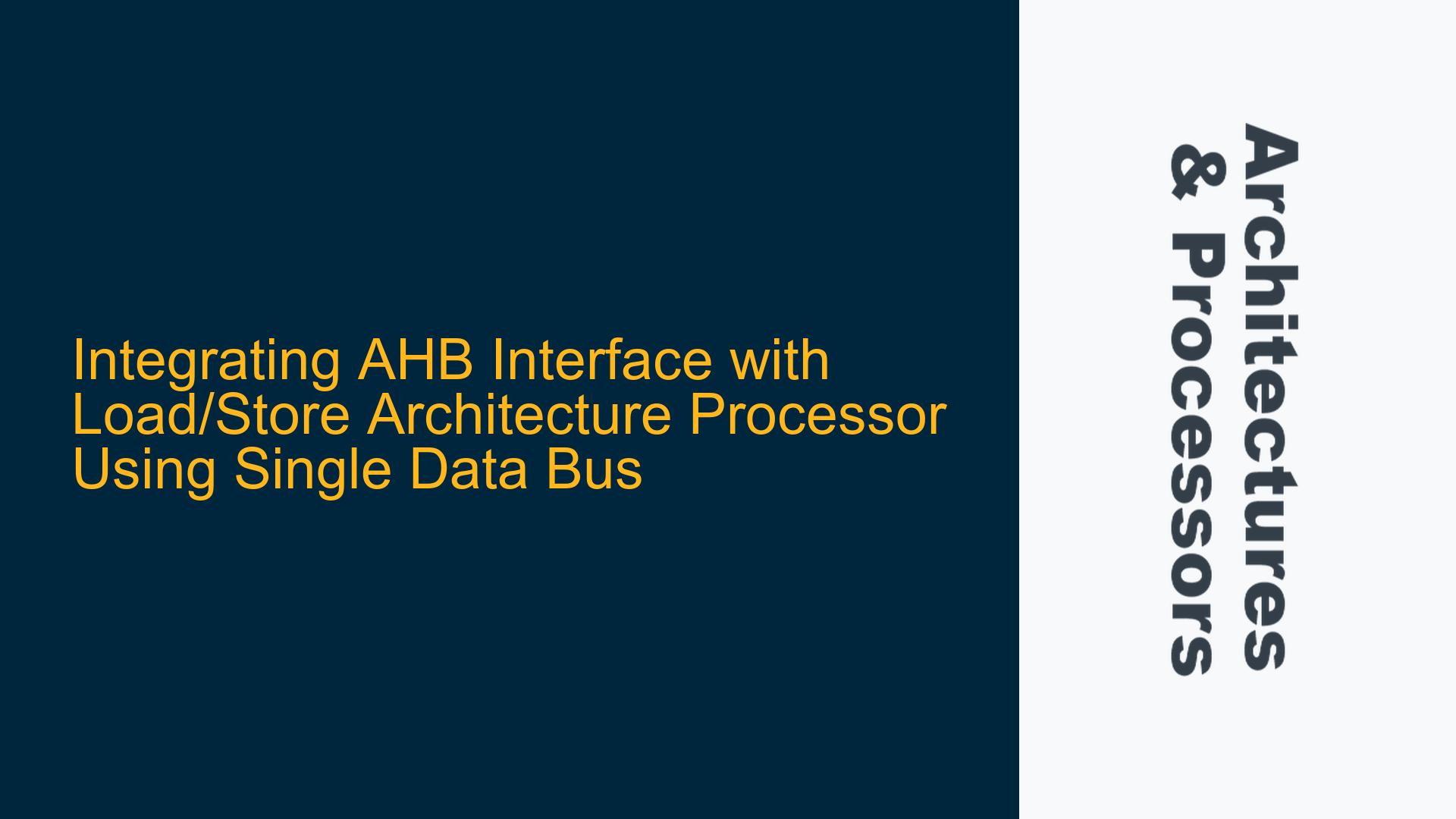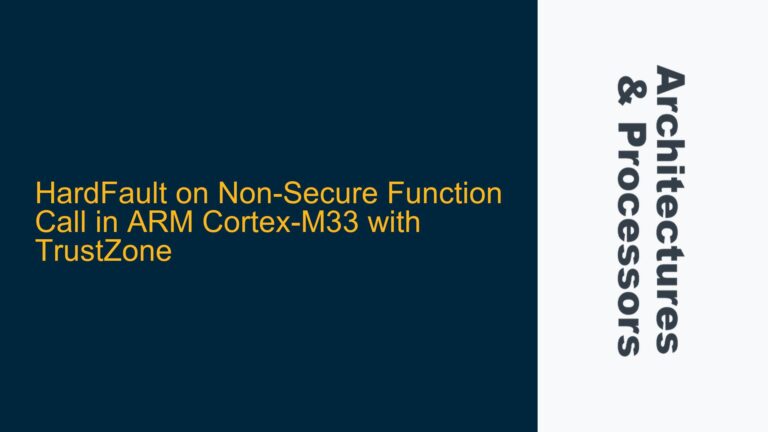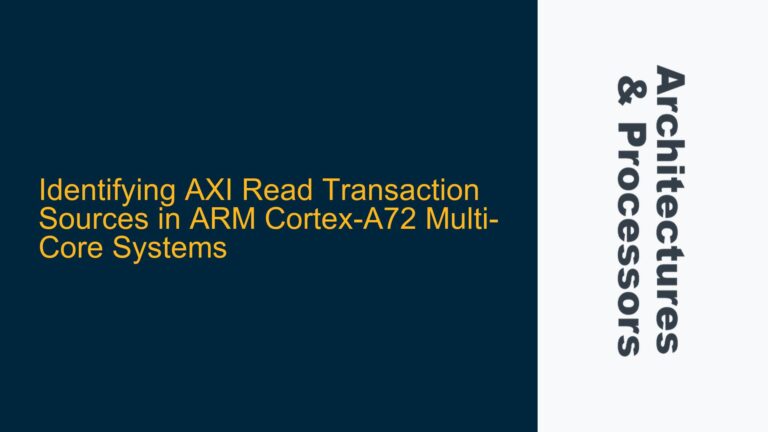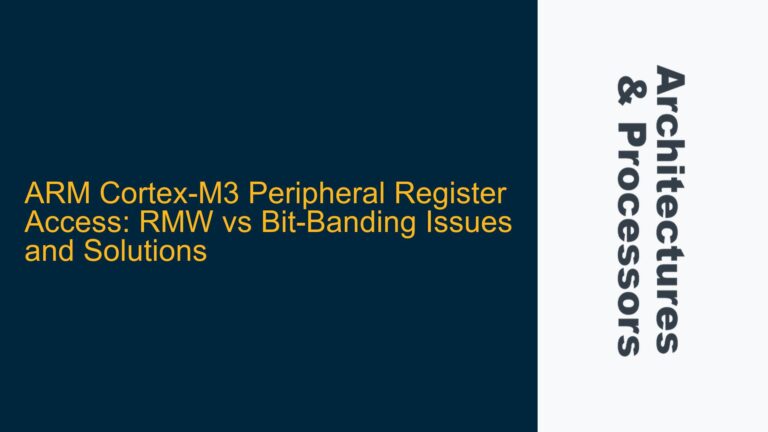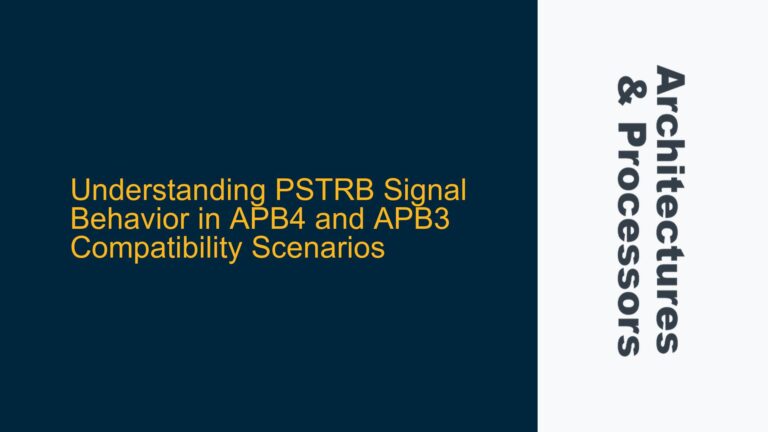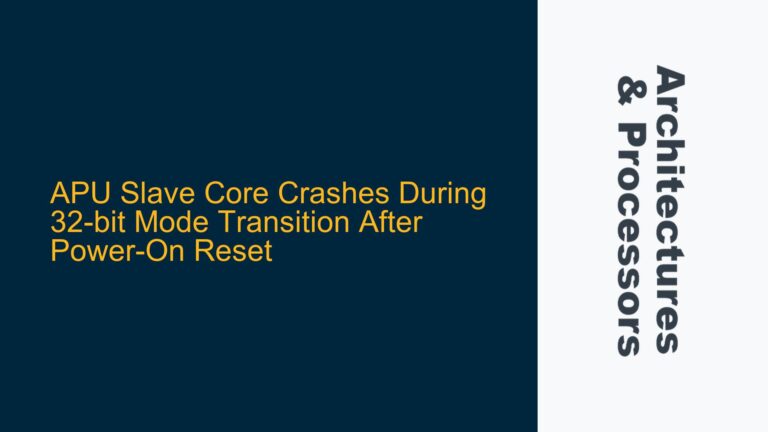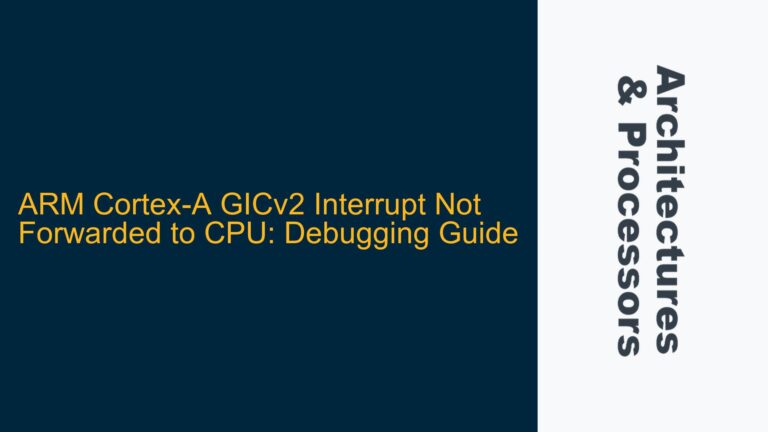Processor Load/Store Architecture Constraints with AHB Interface Requirements
The integration of an AHB (Advanced High-performance Bus) interface into a processor with a load/store architecture presents a significant challenge, particularly when the processor is designed with a single bidirectional data bus for both input and output operations. The AHB protocol, as defined by ARM, mandates separate data buses for read (HRDATA) and write (HWDATA) operations. This requirement stems from the need to maintain high-performance data throughput and avoid contention during simultaneous read and write operations, which is a common scenario in multi-master systems.
The load/store architecture of the processor implies that all data transfers between the processor and memory are executed through explicit load and store instructions. This architecture typically employs a unified data bus for simplicity, but this design choice conflicts with the AHB specification, which requires separate data paths for read and write transactions. The primary issue arises from the need to multiplex the single bidirectional data bus of the processor into two unidirectional buses (HRDATA and HWDATA) that comply with the AHB protocol.
The AHB protocol also imposes specific timing and control signal requirements, such as the use of HREADY to indicate the completion of a transfer and HTRANS to specify the type of transfer (e.g., IDLE, BUSY, NONSEQ, SEQ). These signals must be correctly generated and synchronized with the processor’s internal clock and control logic to ensure seamless communication between the processor and other AHB-compliant components in the system.
Single Data Bus Multiplexing Challenges and AHB Protocol Compliance
The core of the problem lies in the multiplexing of the single bidirectional data bus into two unidirectional buses while ensuring compliance with the AHB protocol. The processor’s internal data bus is shared between read and write operations, which means that the bus is used for both fetching data from memory (load operations) and storing data to memory (store operations). In contrast, the AHB protocol requires separate data buses for read and write operations to avoid contention and ensure efficient data transfer.
One of the primary challenges is managing the directionality of the data bus. The processor’s internal data bus is typically bidirectional, meaning that the same physical wires are used for both input and output operations. However, the AHB protocol requires separate unidirectional buses for HRDATA (read data) and HWDATA (write data). This necessitates the use of multiplexers and control logic to route data between the processor’s internal bus and the AHB interface.
Another challenge is ensuring that the timing requirements of the AHB protocol are met. The AHB protocol uses a handshake mechanism involving signals such as HREADY, HTRANS, and HRESP to manage data transfers. The processor’s internal control logic must be extended to generate these signals in accordance with the AHB specification. This includes ensuring that HREADY is asserted at the correct time to indicate the completion of a transfer and that HTRANS is updated to reflect the current transfer type.
Additionally, the AHB protocol requires that the data buses remain stable during specific phases of the transfer cycle. For example, during a read operation, the HRDATA bus must remain stable until the transfer is complete, while during a write operation, the HWDATA bus must be driven with the correct data at the appropriate time. This requires careful design of the control logic to ensure that the data buses are driven and sampled at the correct times.
Implementing AHB-Compatible Data Bus Multiplexing and Control Logic
To address the challenges of integrating an AHB interface with a processor that has a single bidirectional data bus, a systematic approach is required. The first step is to design the multiplexing logic that will separate the processor’s internal data bus into two unidirectional buses for HRDATA and HWDATA. This can be achieved using a combination of multiplexers and tri-state buffers.
The multiplexer will be responsible for routing data between the processor’s internal bus and the AHB interface. During a read operation, the multiplexer will route data from the HRDATA bus to the processor’s internal bus. During a write operation, the multiplexer will route data from the processor’s internal bus to the HWDATA bus. The control logic will generate the necessary select signals for the multiplexer based on the current operation (read or write).
Tri-state buffers can be used to control the directionality of the data bus. During a read operation, the tri-state buffer connected to the HRDATA bus will be enabled, allowing data to flow from the AHB interface to the processor’s internal bus. During a write operation, the tri-state buffer connected to the HWDATA bus will be enabled, allowing data to flow from the processor’s internal bus to the AHB interface.
The control logic must also generate the necessary AHB control signals, such as HREADY, HTRANS, and HRESP. These signals must be synchronized with the processor’s internal clock and control logic to ensure that data transfers are executed correctly. The HREADY signal must be asserted when the transfer is complete, and the HTRANS signal must be updated to reflect the current transfer type (e.g., IDLE, BUSY, NONSEQ, SEQ).
To ensure that the timing requirements of the AHB protocol are met, the control logic must be designed to handle the various phases of the transfer cycle. During the address phase, the control logic must ensure that the address and control signals are stable and valid. During the data phase, the control logic must ensure that the data buses are driven and sampled at the correct times.
In addition to the multiplexing and control logic, it is also important to consider the impact of the AHB interface on the processor’s overall performance. The AHB protocol is designed for high-performance data transfer, but the additional logic required to interface with the processor’s internal bus may introduce latency and reduce overall system performance. To mitigate this, the control logic should be optimized to minimize the number of clock cycles required for each transfer.
Finally, the design must be thoroughly verified to ensure that it meets the requirements of the AHB protocol and that it functions correctly in the context of the overall system. This can be achieved through a combination of simulation and formal verification techniques. Simulation can be used to validate the behavior of the design under various operating conditions, while formal verification can be used to prove that the design meets the requirements of the AHB protocol.
In conclusion, integrating an AHB interface with a processor that has a single bidirectional data bus requires careful design of the multiplexing and control logic. The design must ensure that the processor’s internal bus is correctly multiplexed into separate HRDATA and HWDATA buses, and that the necessary AHB control signals are generated and synchronized with the processor’s internal clock and control logic. The design must also be optimized to minimize latency and ensure high-performance data transfer. Finally, the design must be thoroughly verified to ensure that it meets the requirements of the AHB protocol and functions correctly in the context of the overall system.
